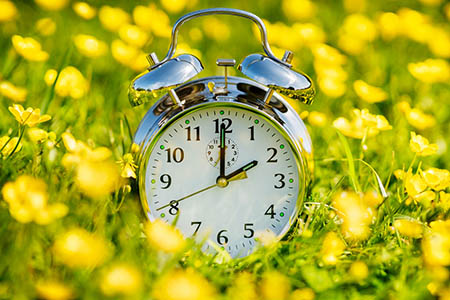Weather
By Dan Skeldon
Imagine a world where the sun never set before 5pm, even in the dead of winter. No more early sunsets and driving home from work in darkness. In this world, there’s no more “spring ahead” and “fall back” with the clocks, so no more adjusting to gaining or losing an hour of sleep.
Sounds great, doesn’t it? It’s been a dream for some for a long time. And earlier this month, it got one step closer to becoming reality.
The United States Senate recently passed the Sunshine Protection Act, a bill that would make daylight saving time permanent throughout the United States. Interestingly, it passed with unanimous consent. Who would have thought that during these highly partisan and deeply divided times that anything could ever pass unanimously in either house of Congress. Yet while all 100 senators agree that this plan is best for our country, some meteorologists, including this one, do not.
Despite the Senate’s approval, the bill still has to pass the U.S. House and get signed into law by the President, so there are several steps remaining and there’s no guarantee that the Sunshine Protection Act will become the law of the land. And even if it does, it won’t take effect until November of 2023, which means at minimum, we’ll have at least one more year of springing forward in early March and falling back in early November.
The changing of the clocks has been an annual tradition now for the last five decades, since 1974. Interestingly enough, that is the year that the United States last experimented with year-round daylight saving time. Congress called it something different back then, the Emergency Daylight Savings Time Energy Conservation Act. And as its name suggests, its main intent was to conserve energy during the energy crisis that dominated the 1970s. But even then, people were also excited about the later sunsets, and not having the biannual duty of changing their clocks. Yet less than a year after this act was implemented as law in early January of 1974, it was promptly repealed, due especially to unpopularity but also failing to result in any appreciable energy conservation.
So if at first it doesn’t succeed, try try again. Or at least that’s what many politicians, and probably many of you, are thinking. But I think if this reincarnated idea gets a second chance, history may repeat itself and it may be doomed for repeal again in the future. Why? Because to reap the benefits of the later sunsets, the cost is later sunrises, or as the old saying goes, it’s like robbing Peter to pay Paul.
Yes, those two months here in South Jersey when the sun sets before 5pm, specifically from November 7th through January 16th, can be a little depressing. The early darkness is a bummer, especially for those stuck in work and school all day only to come home and it’s already night. If we switch to year round daylight saving time, the earliest sunset in South Jersey would be just after 5:30pm in early December. Of course, given the colder weather in late fall and early winter, can we really capitalize on that “extra” hour of early evening daylight that time of year? Certainly, the opportunities are fewer than when we get the extra hour in the spring and summer.
But remember the byproduct of the later sunsets in the winter are much later sunrises. For instance here in South Jersey, the two month stretch from December 3rd through February 5th would see the daily sunrise after 8am. That means waiting for the bus, riding to work, and even the first hour of some of our school and work days spent in darkness. On an especially cloudy or rainy day, that darkness will linger as late as 8:30am. That means, among many other issues, most kids waiting for the bus in total darkness from just after Thanksgiving to just before Valentine’s Day each winter.
Of course, there are pros and cons to both sides. And whatever our lawmakers decide, hopefully the process will be a thoughtful and productive one that weighs the benefits and disadvantages of both. While I’m personally inclined to keep the process the way it is, public opinion is currently on the side of year round daylight saving time. There’s actually a third, less discussed option as well, year round eastern standard time, which some biologists argue is best and healthiest for our bodies natural rhythm. But given the popularity of the late summer sunsets each year, that third option has gained very little support, both from the public and in Washington. Only time will tell the fate of our time (zone). And while I’m officially forecasting America to take another stab at year round daylight saving time, I’m also forecasting buyer’s remorse a few years down the road, and an eventual return to what we’ve used for the last 50+ years. I’ll be sure to save this column to see if my time zone prognostications hold any water and if my predictions age well.
Meteorologist Dan Skeldon has a degree in meteorology from Cornell University. He has forecasted the weather in South Jersey for the last 18 years, first on the former television station NBC40 and then on Longport Media radio. Dan has earned the American Meteorological Society Seal of Approval for Broadcast Meteorologists, and now does television broadcasts on WFMZ-TV in Pennsylvania’s Lehigh Valley.









